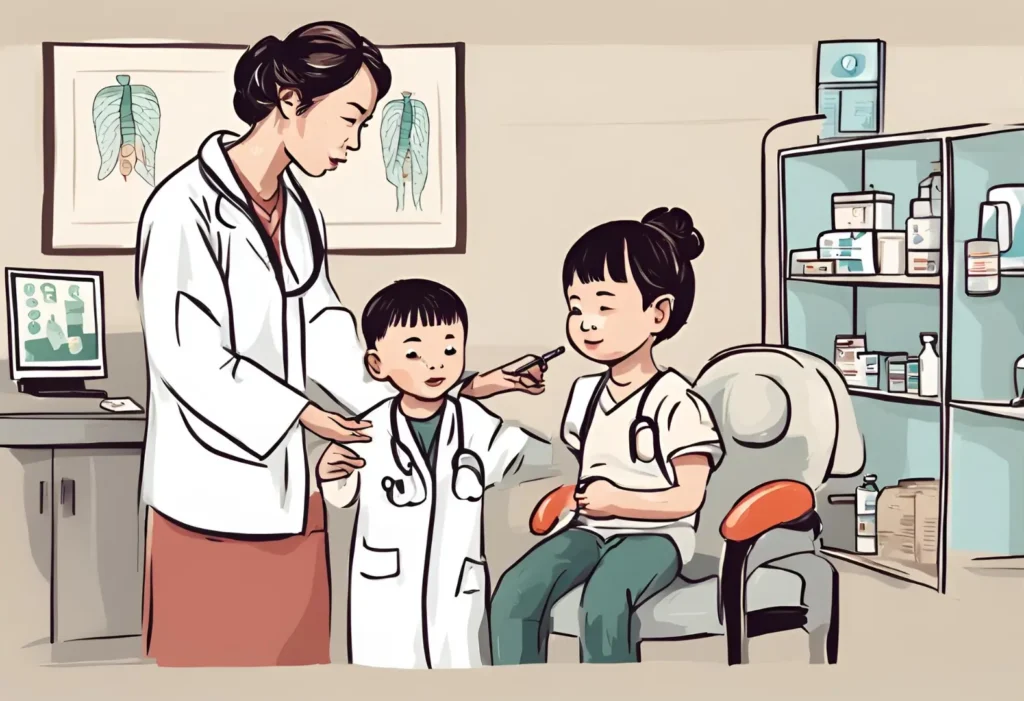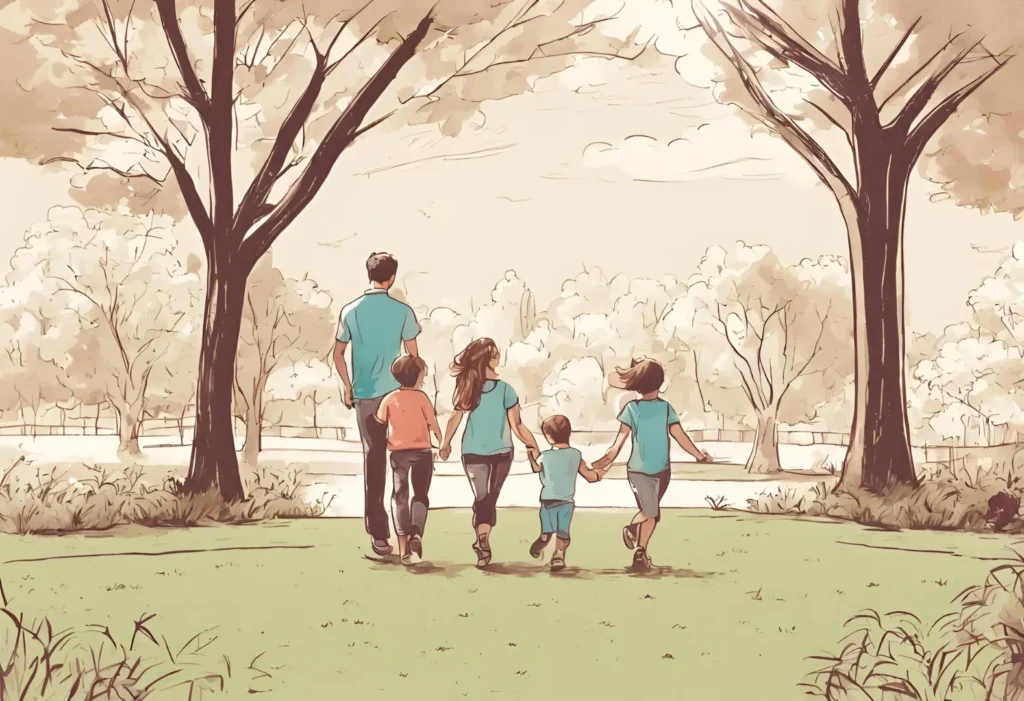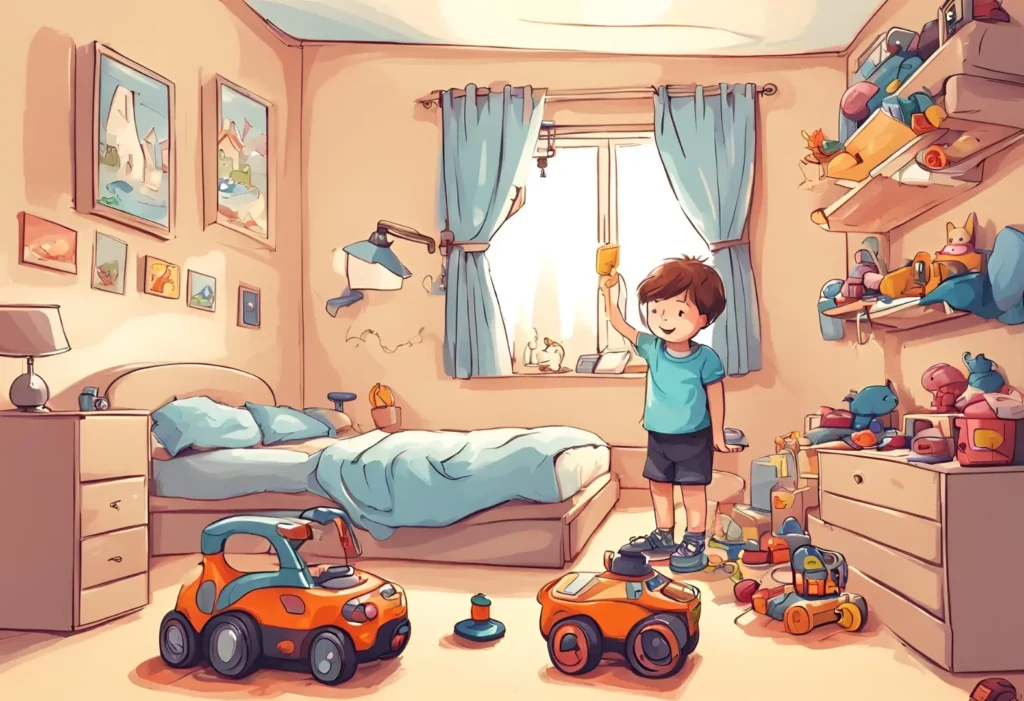Childhood dementia is a rare brain condition that affects children. It is caused by over 100 genetic disorders and causes symptoms such as memory loss, speech impairments, and cognitive confusion. This article provides an overview of childhood dementia, including its symptoms, causes, diagnosis, and available support and treatment options.
It is important to raise awareness about this condition because it has a major impact on affected children and their families. By learning more about childhood dementia, we can provide better support to those affected by it.
What is Childhood Dementia?

Childhood dementia is a condition that causes significant problems in a child’s life. It shows up in different ways, but one of the main things is that the child’s memory gets worse over time. They might not be able to remember things that just happened, recognize people they know, or remember how to do things they learned before.
Another thing that often happens is the child has trouble speaking. They might have a hard time saying words, putting sentences together, or even lose the ability to speak at all. This can be really frustrating for both the child and the people taking care of them.
The child may also get confused easily. They might not understand simple instructions, have trouble finishing tasks, or not know where they are. This confusion can make it hard for them to do everyday things and learn new stuff.
Effects on Development and Daily Functioning
These symptoms have a big impact on how a child grows and does daily activities:
- Learning difficulties: Memory loss and confusion make it harder for kids to do well in school.
- Trouble with friends: Speech problems and confusion can make it tough for children to play with others.
- Emotional issues: Feeling frustrated about these challenges can lead to anxiety or behavior troubles.
It’s not just the child who feels the effects – their family and daily routines are affected too. Simple things like getting dressed or sticking to a schedule become hard and need someone watching and helping all the time.
What Causes Childhood Dementia?
Childhood dementia is caused by more than 100 genetic disorders. These disorders disrupt normal brain function and cause the symptoms seen in affected children.
Genetic Causes
Several genetic abnormalities contribute to childhood dementia. They can be grouped into the following main categories:
- Inborn Errors of Metabolism: These are genetic defects that affect the body’s ability to convert food into energy. Conditions like Tay-Sachs disease are examples of inborn errors of metabolism. They lead to a buildup of harmful substances in the brain.
- Lysosomal Disorders: Lysosomes are structures within cells that break down waste materials. Disorders such as Gaucher’s disease and Batten disease occur when lysosomes don’t function properly. This results in an accumulation of waste products, which can damage brain cells.
- Mitochondrial Disorders: Mitochondria are responsible for producing energy in cells. When these energy generators fail, conditions like Leigh syndrome can develop. This affects various body systems, including the brain, and leads to progressive neurological decline.
Understanding these genetic causes is crucial for diagnosing and managing childhood dementia effectively. By identifying them early on, we can provide better support and tailor treatment strategies to meet each child’s specific needs.
How Common is Childhood Dementia?
Childhood dementia is an extremely rare condition. It affects approximately 1 in every 2,900 babies globally. This rarity makes it less recognized compared to other childhood diseases. Due to its infrequency, many healthcare providers may not be familiar with it, leading to delays in diagnosis and treatment.
Global Impact
- Prevalence: About 700,000 children worldwide are currently living with dementia.
- Mortality Rate: Tragically, half of the affected children pass away by the age of 10.
Comparison to Other Conditions
- Childhood dementia is less common than conditions like autism or Down syndrome, which have higher prevalence rates.
- The rarity underscores the need for better awareness and research to improve outcomes for affected children.
What age does Childhood Dementia start?
Childhood dementia can manifest at various ages, often depending on the underlying genetic disorder. Symptoms may appear as early as infancy or even be present at birth. In some cases, signs might not become evident until later childhood or adolescence.
Early Onset
- Infancy: Certain conditions like inborn errors of metabolism can cause symptoms in the first months of life.
- Toddler Years: Disorders such as mucopolysaccharidoses might show signs during the toddler years, with noticeable developmental delays and physical issues.
Later Onset
- School Age: Lysosomal disorders can lead to cognitive and motor skill deterioration becoming apparent around school age.
- Adolescence: Some mitochondrial disorders might not fully reveal themselves until adolescence, when more complex cognitive and physical tasks become challenging.
The age of onset significantly influences the progression and management of the condition. Early diagnosis is crucial for implementing supportive therapies that can enhance quality of life for affected children.
How is Childhood Dementia Diagnosed?

Diagnosing childhood dementia is challenging because it is rare. It is important to detect it early so that it can be managed effectively, but because it is not common, it is often not identified until later. Medical professionals use a series of thorough assessments to diagnose this disorder.
Medical Assessments Involved:
- Neurologic Exams: These exams help assess brain function and identify any abnormalities in the nervous system.
- Genetic Testing: Since childhood dementia is caused by genetic disorders, genetic testing is crucial. It identifies specific mutations that are responsible for the condition.
- Behavioral and Cognitive Evaluations: Evaluating a child’s behavior and cognitive abilities helps us understand how much they are affected.
Managing Behavioral Issues:
Children with dementia often have behavioral problems. Having a structured routine is very important because it provides stability and predictability. Specialized therapies like occupational therapy and speech therapy can also help manage these issues effectively.
Early diagnosis through these assessments can significantly improve the quality of life for affected children by enabling timely interventions and support.
Is Childhood Dementia Fatal?
Childhood dementia, tragically, is often fatal. This condition results from various genetic disorders that progressively damage brain cells. The degeneration leads to a severe decline in cognitive functions, motor skills, and overall health.
Affected children typically experience a rapid progression of symptoms:
- Memory Loss: Gradual worsening over time.
- Speech Impairments: Loss of ability to communicate effectively.
- Physical Decline: Loss of movement, vision, and hearing, as well as seizures.
These deteriorations severely impact daily life and development. Most children with this condition face significant health challenges early on, affecting their quality of life.
Statistically:
- Approximately half of the affected children do not survive beyond the age of 10.
- The progressive nature of this condition means that most children will face a decline that inevitably leads to early death.
The fatal aspect underscores the urgent need for awareness and research. Understanding the gravity of childhood dementia can help drive efforts towards finding effective treatments and providing comprehensive support for affected families.
What is the Childhood Dementia life expectancy?
Childhood dementia significantly impacts life expectancy. Many children with this condition face a reduced lifespan, with half of them passing away before the age of 10. This drastic reduction in life expectancy is often due to the progressive nature of the underlying genetic disorders.
Factors Influencing Life Expectancy
Several factors influence how long a child with dementia may live:
- Type and Severity of Disorder: Different genetic conditions causing childhood dementia vary in severity. For instance, certain lysosomal storage disorders may lead to a quicker decline than others.
- Onset Age: The earlier the symptoms appear, the more severe and rapid the progression tends to be.
- Medical Management: Access to comprehensive care can help manage symptoms and potentially extend lifespan. This includes regular monitoring, medications, therapies, and supportive care.
Examples of Conditions Affecting Life Expectancy
- Lysosomal Storage Disorders: These include conditions like Batten disease and Sanfilippo syndrome, which often lead to early childhood death.
- Mitochondrial Disorders: Children with these disorders may experience severe neurological decline early in life.
- Peroxisomal Diseases: Such as Zellweger spectrum disorders, which also result in significant life expectancy reductions.
Despite advancements in medical care and research, there is still no cure for childhood dementia. Therefore, ongoing support and palliative care remain crucial for improving the quality of life for affected children and their families.
Does Childhood Dementia Go Away?
Childhood dementia is a progressive condition, which means that it worsens over time. Unlike some other childhood illnesses that may improve or resolve with treatment, childhood dementia does not go away. The degenerative nature of the disorder leads to continuous decline in cognitive and physical abilities.
Key Points to Understand:
- Progressive Nature: Symptoms such as memory loss, difficulty with speech, and cognitive confusion become more pronounced as the disease advances.
- Permanent Condition: Current medical knowledge indicates there is no cure for childhood dementia. Treatments focus on managing symptoms and improving quality of life rather than reversing the condition.
Supportive care plays a crucial role in managing childhood dementia. This includes:
- Therapies: Speech therapy, physical therapy, and occupational therapy can help maintain skills for as long as possible.
- Medications: Certain medications may assist in controlling symptoms like seizures or behavioral issues.
- Family Support: Counseling and support groups are essential for families coping with the emotional and practical challenges of this condition.
The focus remains on enhancing the daily lives of affected children and providing holistic support to their families. Despite these efforts, the irreversible progression underscores the urgent need for research into effective treatments and potential cures.
Current Research and Future Directions
Recent research into treating childhood dementia focuses on understanding the genetic and molecular mechanisms behind the condition. Scientists are exploring a variety of potential treatments, including gene therapy, enzyme replacement therapy, and small molecule drugs. These approaches aim to address the root causes of the disease rather than just managing symptoms.
Potential Treatments Being Explored
- Gene Therapy: Researchers are investigating methods to correct or replace defective genes responsible for childhood dementia. This technique holds promise in halting or even reversing the progression of the disease.
- Enzyme Replacement Therapy: Some forms of childhood dementia result from enzyme deficiencies. Supplementing these missing enzymes can potentially slow down disease progression.
- Small Molecule Drugs: Scientists are developing drugs targeting specific pathways involved in neurodegeneration. These drugs aim to protect brain cells and improve cognitive functions.
Despite these advancements, there is still no cure for childhood dementia. The complexity and rarity of the condition pose significant challenges to finding definitive treatments. Continuous investment in scientific studies is crucial to improving long-term outcomes for affected children.
Focus on Early Diagnosis and Intervention
Research efforts are also focusing on early diagnosis and intervention strategies. Earlier detection can lead to more effective management and better quality of life for children with dementia.
Supporting ongoing research and raising awareness about childhood dementia will help accelerate the development of new therapies. Families affected by this condition rely on scientific advancements to offer hope for a brighter future.
Supporting Children and Families Affected by Childhood Dementia

Holistic support is crucial for children with dementia. This involves addressing not only medical needs but also emotional and social well-being. Families often face immense stress, so providing comprehensive care can significantly improve their quality of life.
Ways to Provide Support
Here are some ways we can support children with dementia and their families:
- Mental Health Services: Access to counseling and therapy helps families cope with the emotional challenges posed by the condition. Psychological support can alleviate feelings of isolation and anxiety, promoting a healthier family environment.
- Specialized Care Programs: Children benefit from therapies tailored to their specific needs, such as speech therapy, occupational therapy, and physical therapy. These programs aim to improve communication skills, motor functions, and daily living activities.
- Respite Care: Offering temporary relief to caregivers, respite care services allow families to take a break from their caregiving duties. This support is vital for maintaining caregivers’ mental health and preventing burnout.
The Importance of Support Networks
Support networks are essential in managing childhood dementia. Connecting with other families facing similar challenges can provide emotional comfort and practical advice. Community resources, including support groups and local organizations, play a significant role in building these connections.
By focusing on holistic support, we can help children with dementia lead more fulfilling lives and ensure their families receive the necessary assistance to navigate this difficult journey.
Conclusion
Raising awareness about childhood dementia is crucial. Support organizations working towards a better future for affected children. Share the knowledge gained from this article to foster understanding and inclusivity in society. By doing so, we can improve the childhood dementia life expectancy and reduce the emotional and physical impact on children, potentially lowering the incidence of early death.
Together, we can make a difference.
Read More Articles about Childhood:
Childhood Illnesses: 10 Most Common Conditions in Children



